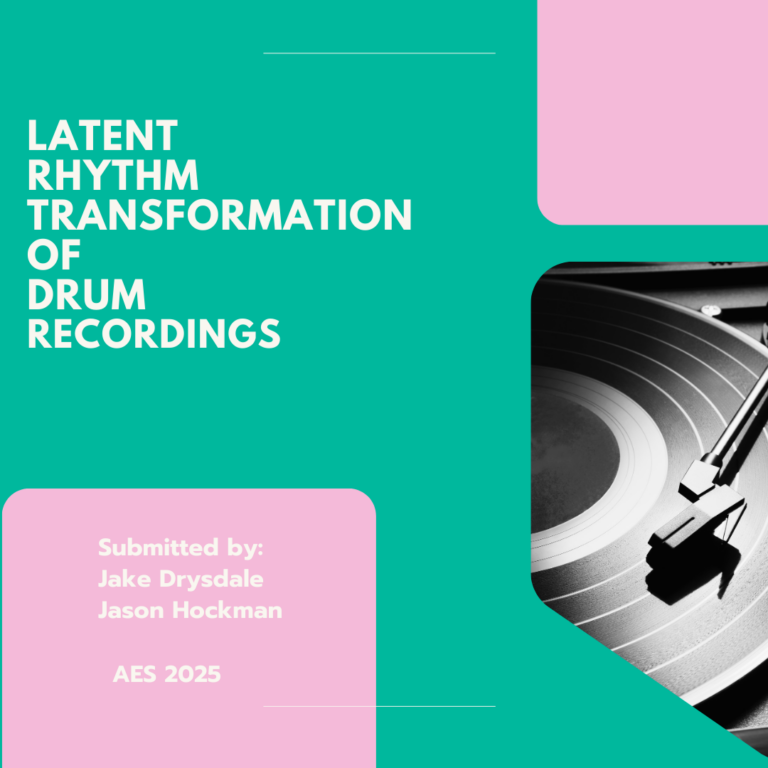At the AES International Conference on AI & Machine Learning for Audio 2025 in London, researchers Jason Hockman (School of Digital Arts, Manchester Metropolitan University, UK) and Jake Drysdale (Beatoven.ai, India) presented a Late-Breaking Demo Paper that introduced a new way to transform the rhythmic style of drum recordings using advanced AI techniques.
The paper, Latent Rhythm Transformation of Drum Recordings, describes how artificial intelligence can automatically adapt the rhythmic “feel” of one drum track to match the timing and style of another — without the tedious manual editing music producers often face today.
Why Rhythm Style Transfer Matters
Drums define the energy and identity of a song. Changing the groove or feel of a drum track — while keeping its overall character intact — is common in music production, especially in genres like hip-hop, jazz, and electronic music.
Traditionally, this is done through a process called redrumming, where the original drum performance is used as a timing reference for replacing or layering new drum sounds. Tools like Recycle and modern DAWs such as Ableton Live or Logic Pro allow for this, but they often require:
This is where the new research steps in: to make the entire process automatic and seamless using AI.
The Core Idea: AI Learns Your Groove
The proposed method combines two powerful AI components:
1. Variational Autoencoders (VAEs): These compress the source drum recording into a latent space — a compact representation that captures timing and timbral details.
2. Transformers: The same architecture behind large language models like GPT, here used to re-sequence the rhythm by mapping it to the style of a target track.
The system takes in:
It then outputs a new drum track: same sound, new groove.
How It Works Behind the Scenes
The VAE learns to encode and decode short drum recordings, building an internal “language” for drum timing and timbre.
A lightweight transformer uses information from the target track — such as drum transcription probabilities and intermediate audio features — to guide the rhythm changes.
The system even introduces
with multiple kits, rhythms, and tempo variations to ensure it learns a wide range of rhythmic styles and can handle expressive timing, swing, and microtiming nuances.
Results: What the Researchers Found
Listening examples shared by the authors show promising results:
The researchers also plan to add interactive controls, letting users directly edit or fine-tune the rhythm transformation before rendering the final audio.
Why This Research Is Exciting
For music producers, sound designers, and anyone working with beats, this work shows how machine learning can automate low-level, time-consuming tasks while leaving room for creative exploration.
It bridges the gap between performance realism (keeping the human feel) and production flexibility (changing groove and style on demand).
While still in the research stage, this approach points toward a future where complex rhythm editing could be handled in seconds rather than hours — and with far greater musical nuance than traditional quantization or beat-slicing tools.
Reference
Hockman, J., & Drysdale, J. (2025). Latent Rhythm Transformation of Drum Recordings. Late-Breaking Demo Paper presented at the AES International Conference on AI & Machine Learning for Audio, London, UK.

